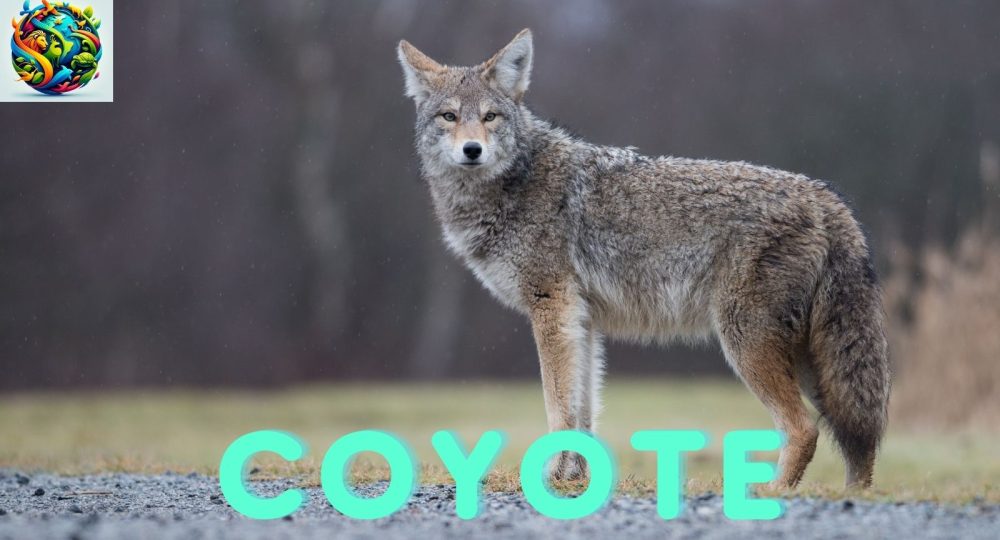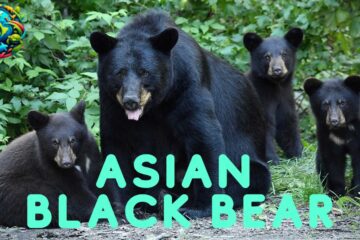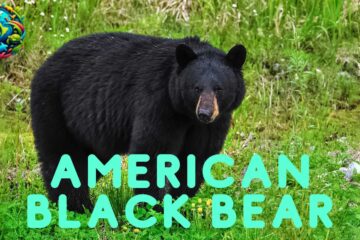
Coyote: Wily Survivors of North America
Coyote: Wily Survivors of North America
Introduction
The coyote, known for its adaptability and cunning nature, is one of North America’s most iconic and resilient predators. Found across the continent, from dense forests and deserts to urban areas, coyotes play a crucial role in maintaining ecological balance. Revered in Native American folklore and often misunderstood, these animals are a testament to survival and adaptability. This article delves into the fascinating world of coyotes, exploring their habitats, physical characteristics, behaviors, and much more.
Amazing Facts
They possess numerous intriguing attributes:
- Adaptability: They thrive in diverse habitats, including forests, grasslands, deserts, and urban areas.
- Communication: Coyotes are highly vocal, using a range of howls, yips, barks, and growls to communicate with each other.
- Diet: They are omnivores, with a diet that includes small mammals, birds, fruits, and even human garbage, showcasing their opportunistic feeding habits.
- Speed: They are swift runners, capable of reaching speeds up to 40 miles per hour (64 kilometers per hour).
- Longevity: In the wild, they typically live up to 6 to 8 years, but can live longer in captivity.
Habitat and Food
They are highly adaptable and thrive in various environments, reflecting their versatility and resilience.
Habitat:
- Found across North America, from Alaska and Canada to Mexico and Central America.
- They inhabit diverse environments, including forests, grasslands, deserts, mountains, and urban areas.
- They prefer areas with ample cover and food resources, but they can adapt to virtually any environment.
Food:
- Omnivorous, with a diet that includes small mammals (rabbits, rodents), birds, reptiles, insects, fruits, and carrion.
- In urban areas, they often scavenge from human garbage and pet food.
- Their opportunistic feeding habits help them survive in diverse habitats, from wilderness areas to cityscapes.
Appearance
They are known for their sleek and agile appearance. Key characteristics include:
- Size: Adults stand about 1.5 to 2 feet (45 to 60 cm) tall at the shoulder and weigh between 20 to 50 pounds (9 to 23 kg).
- Color: Their coat is generally grayish-brown, with reddish tinges on the legs and ears, and a white underbelly.
- Build: They have slender, agile bodies with long legs adapted for running and pouncing on prey.
- Face: Coyotes have a narrow, pointed face with large, erect ears and keen, yellow or amber eyes that convey alertness and intelligence.
Types/Subspecies of Coyotes
There are several recognized subspecies of coyotes, each adapted to their specific environments:
- Eastern Coyote (Canis latrans var.): Found in the northeastern United States and Canada, often larger due to interbreeding with wolves.
- Mexican Coyote (Canis latrans cagottis): Inhabits Mexico and parts of Central America, known for its smaller size and lighter coat.
- California Valley Coyote (Canis latrans ochropus): Native to California’s valleys, recognized by its distinct coat coloration.
- Northern Coyote (Canis latrans incolatus): Found in the northern regions of North America, characterized by its thicker fur and larger size.
Predators and Threats
Despite their adaptability, they face various natural and human-induced threats that impact their survival.
Natural Predators:
- Wolves: In areas where their ranges overlap, wolves can be significant predators of coyotes.
- Mountain Lions: Mountain lions occasionally prey on them, particularly when food is scarce.
- Bears: Bears may occasionally kill them, especially when defending carcasses or during direct encounters.
- Eagles: Large birds of prey, such as golden eagles, may target coyote pups.
Threats:
- Habitat Loss: Urban development, agriculture, and deforestation reduce available habitats.
- Human-Wildlife Conflict: They often come into conflict with humans when they prey on livestock or pets, leading to retaliatory killings.
- Hunting and Trapping: In many areas, coyotes are hunted or trapped for their fur or to control their population.
- Disease: They are susceptible to diseases such as rabies, canine distemper, and mange, which can significantly impact populations.
Mating
They exhibit unique and complex mating behaviors, essential for the continuation of their species.
- Breeding Season: Typically occurs once a year, from January to March.
- Courtship: Coyotes engage in courtship behaviors such as vocalizations, scent marking, and physical displays of affection.
- Gestation and Birth: After a gestation period of about 63 days, females give birth to litters of 4 to 7 pups in dens, which are often hidden in thick brush or abandoned burrows.
- Parental Care: Both parents participate in raising the pups, providing food, protection, and teaching survival skills. Pups are weaned at around 6 to 8 weeks old and begin hunting with the pack by 6 months.
How They Communicate
They use various methods to communicate with each other, particularly during hunting and social interactions.
Vocalizations:
- Howls and Yips: Used to communicate over long distances, often to assemble the pack, mark territory, or signal alarm.
- Barks and Growls: Used during close-range interactions to express aggression, submission, or playfulness.
- Whines and Whimpers: Often used between pups and adults to communicate needs or submission.
Body Language:
- Posturing: Coyotes use body postures, such as raised hackles, tail positioning, and ear movements, to convey dominance, submission, or readiness to mate.
- Facial Expressions: Expressions such as bared teeth, flattened ears, and narrowed eyes communicate intentions and emotions.
Chemical Signals:
- Scent Marking: They use scent glands and urine to mark territory, signal reproductive status, and communicate with other pack members.
Religious and Cultural Significance
They hold significant symbolic and cultural importance in various societies:
Native American Cultures:
- Mythology: Many Native American tribes view coyotes as tricksters and teachers, featuring prominently in myths and legends.
- Spiritual Symbol: They are often associated with cunning, adaptability, and survival, embodying both positive and negative traits.
Modern Symbolism:
- Conservation Icon: Coyotes are often used in conservation campaigns to raise awareness about wildlife protection and the importance of preserving natural habitats.
- Popular Culture: These animals appear in various forms of media, from literature and art to movies and television, symbolizing resilience, adaptability, and the untamed spirit of nature.
Movies Featuring These Iconic Predators
They have been the central focus of numerous feature films, documentaries, and nature films, showcasing their behaviors and the challenges they face:
- “Coyote: The Trickster” (2016): A documentary that explores the cultural and ecological significance of coyotes in North America.
- “The Adventures of the Coyote” (2015): A family film featuring a young coyote navigating the challenges of the wild.
- “Coyote America” (2017): A documentary based on the book by Dan Flores, highlighting the history and resilience of coyotes in the face of human expansion.
- “Wild North America” (2002): A nature documentary series that includes segments on coyotes and their interactions with other wildlife.
Pronunciation in Different Languages
The term for these iconic predators is pronounced differently across various languages, reflecting linguistic diversity:
- English: /ˌkaɪˈoʊti/ or /kaɪˈoʊt/
- German: /Kojote/
- Mandarin Chinese: /郊狼 (jiāo láng)/
- Japanese: /コヨーテ (koyōte)/
- Russian: /койот (koyot)/
- Arabic: /ذئب البراري (dhi’b al-barārī)/
- Hindi: /कोयोट (koyot)/
FAQs
Q: What do they eat? A: They are omnivores, with a diet that includes small mammals, birds, reptiles, insects, fruits, and carrion. In urban areas, they often scavenge from human garbage and pet food.
Q: Where do they live? A: They inhabit diverse environments across North America, including forests, grasslands, deserts, mountains, and urban areas. They prefer areas with ample cover and food resources.
Q: How do coyotes communicate? A: They communicate through vocalizations such as howls, yips, and barks, body language including posturing and facial expressions, and chemical signals like scent marking.
Q: Are coyotes endangered? A: While many populations are stable, coyotes face threats from habitat loss, human-wildlife conflict, hunting, and disease. Conservation efforts are essential to protect their populations.
Q: What is unique about their reproduction? A: They typically have a breeding season from January to March, with both parents participating in raising the pups. After a gestation period of about 63 days, females give birth to litters of 4 to 7 pups in dens.
The coyote symbolizes the resilience and adaptability of North America’s wildlife, playing a vital role in its ecosystem and human culture. This exploration highlights their unique traits and behaviors, celebrating the complexity and charm of these remarkable predators




